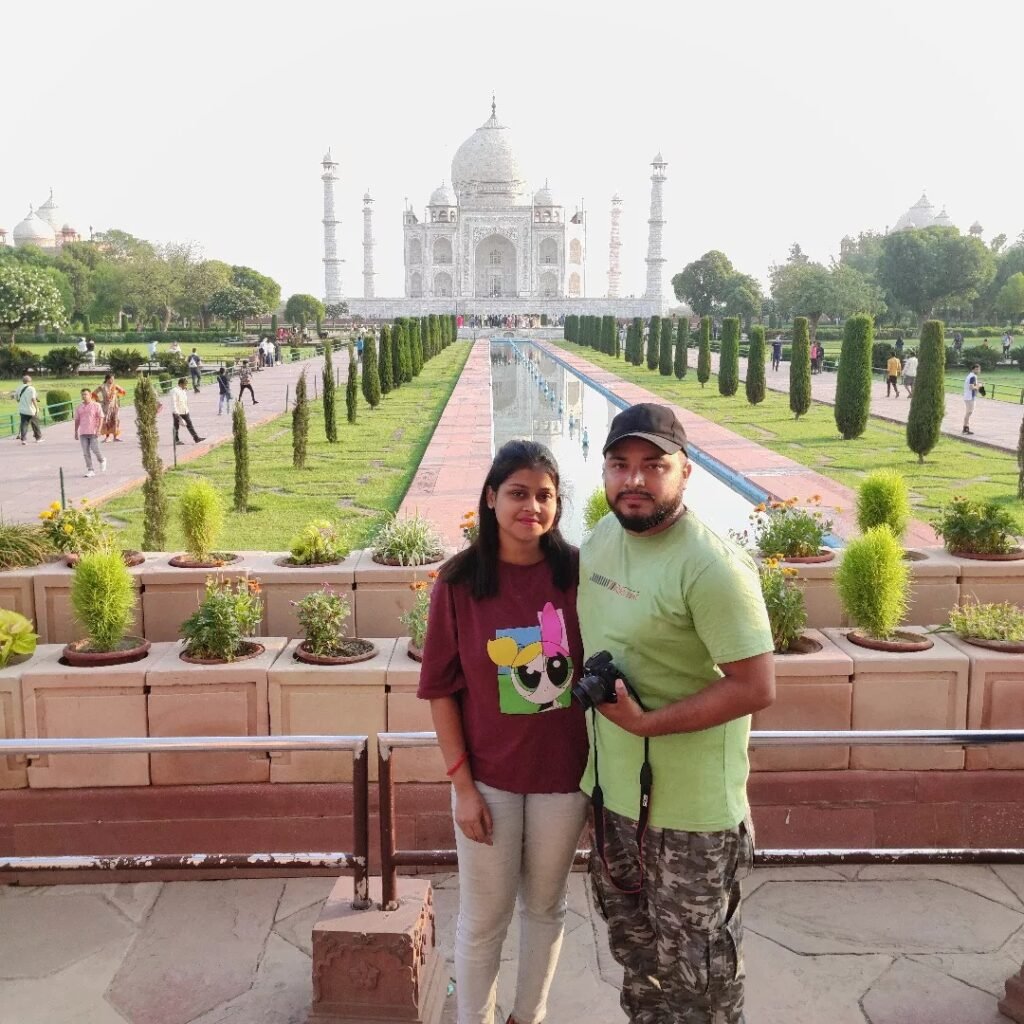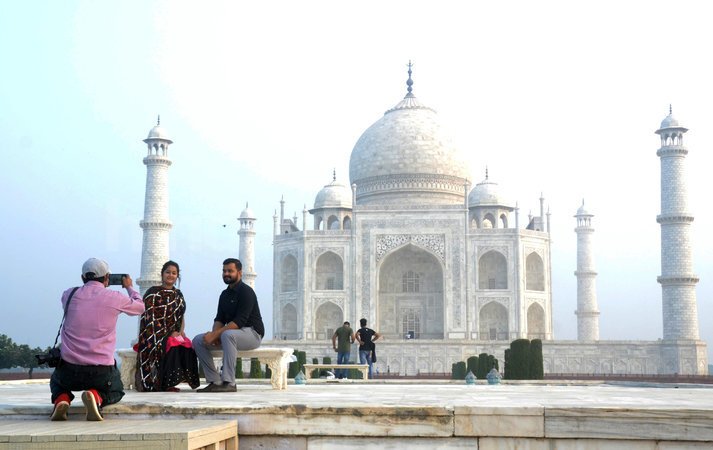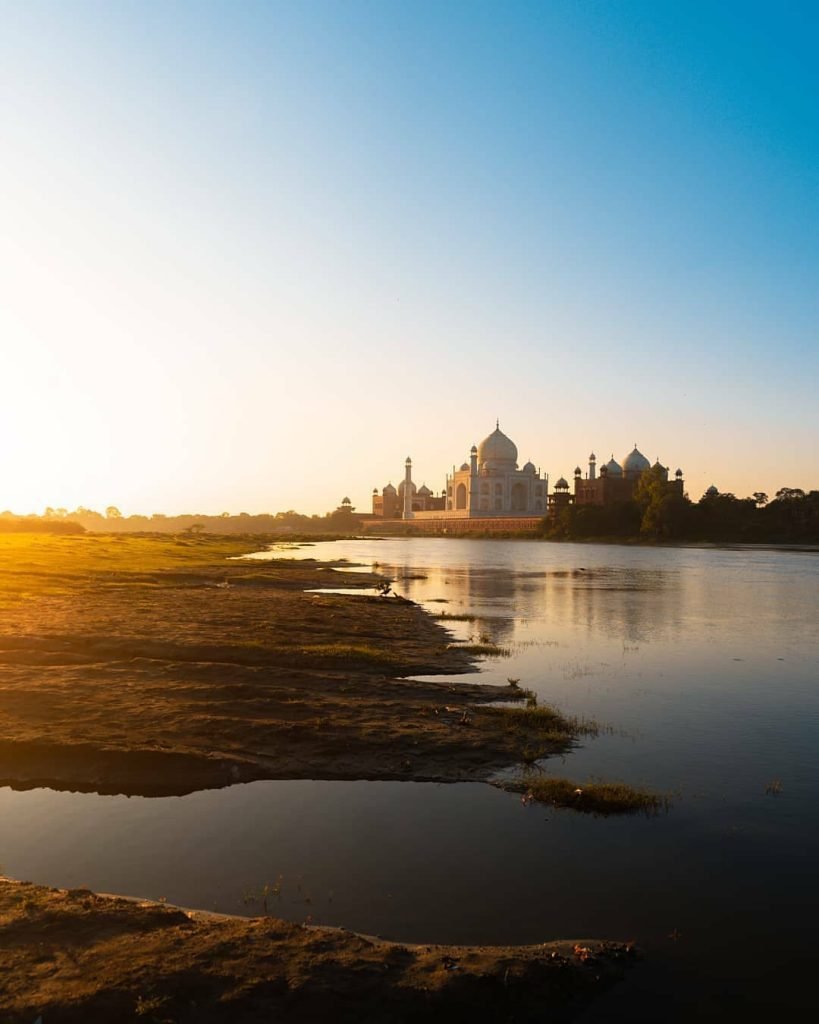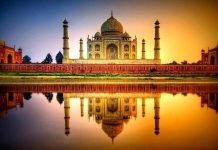The Taj Mahal is considered one of the most beautiful buildings in the world due to its exquisite architecture, intricate carvings, impressive scale, and stunning location. Here are some reasons why the Taj Mahal is considered a marvel of architecture and a symbol of India’s rich cultural heritage:
You also know about How to reach Taj Mahal
Unique Architecture: The Taj Mahal is a masterful example of Mughal architecture, which combines Indian, Persian, and Islamic elements. The building is made of white marble and features intricate carvings and inlay work.

Delhi Agra one day tour by Car – Book with Local Expert From ₹ 6,500
Delhi Agra one day tour by Car Inclusive of neat and clean Car with Experienced Driver + Local Live Guide on Additional cost – Check Out More!
View Details“the Taj Mahal is considered a marvel of architecture and a symbol of India’s rich cultural heritage.”
Impressive Scale: The Taj Mahal is a massive structure that is 73 meters (240 feet) long and 28 meters (92 feet) wide. The central dome is 35 meters (115 feet) high, and the four minarets at the corners of the platform are 40 meters (131 feet) tall.

Stunning Location: The Taj Mahal is located on the banks of the Yamuna River in Agra, India, and is surrounded by beautiful gardens and reflecting pools. The location adds to the beauty of the building and provides a serene and peaceful atmosphere.
“The Taj Mahal was built by Emperor Shah Jahan in memory of his beloved wife Mumtaz Mahal, who died during childbirth. The building symbolizes the emperor’s love for his wife and is a testament to the power of love and devotion”
“you know Shah Jahan, life and youth, wealth and glory, they all drift away in the current of time. Did you strive, therefore, to perpetuate only the sorrow of your heart? Let the splendor of diamond, pearl and ruby vanish? Only let this one teardrop, this Taj Mahal, glisten spotlessly bright on the cheek of time, forever and ever.”
– Rabindranath Tagore, Nobel awardee in literature

Symbolic Meaning: The Taj Mahal was built by Emperor Shah Jahan in memory of his beloved wife Mumtaz Mahal, who died during childbirth. The building symbolizes the emperor’s love for his wife and is a testament to the power of love and devotion.
Overall, the Taj Mahal is a masterpiece of architecture and design that has captivated people’s imaginations for centuries. Its beauty and symbolism have made it a cultural icon and a must-see destination for visitors to India.
“The construction of the Taj Mahal began in 1632 and took approximately 22 years to complete. It was built by an estimated 20,000 workers who used white marble from Makrana in Rajasthan, India.”
Here are some additional facts about the Taj Mahal:
Construction: The construction of the Taj Mahal began in 1632 and took approximately 22 years to complete. It was built by an estimated 20,000 workers who used white marble from Makrana in Rajasthan, India, and precious stones from different parts of the world.
Architectural Features: The Taj Mahal is known for its impressive architectural features, such as the central dome, which is surrounded by four smaller domes, and the intricate inlaid designs made of semi-precious stones such as lapis lazuli, jade, crystal, and amethyst.

Ornamentation: The Taj Mahal is adorned with intricate carvings and calligraphy, including verses from the Quran. The carvings are made of white marble and are inlaid with black marble and other precious stones.
Gardens: The Taj Mahal is surrounded by four gardens, which are divided by water channels. The gardens are designed in a Persian style and feature fountains and reflecting pools.
Preservation: In recent years, the Taj Mahal has been facing a number of preservation challenges, including pollution, groundwater depletion, and damage caused by visitors. To protect the building, the Indian government has implemented a number of measures, such as limiting the number of daily visitors and banning the use of footwear inside the mausoleum.
The Taj Mahal is not only a stunning architectural masterpiece but also a symbol of love and devotion. Its beauty and significance continue to attract millions of visitors from all over the world every year.
you Also like to read:- Best Time to Visit Taj Mahal


































